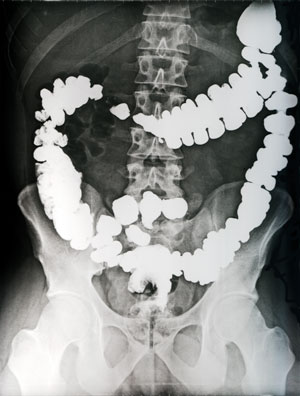Radiology Tests

Radiology is a medical specialty involving the study of images of the human body. Imaging simply means creating an image of the inner configuration of a dense object, such as part of the human body, with the use of radiant energy.
Radiology is classified into two fields, diagnostic and therapeutic.
Diagnostic radiology involves diagnosing diseases and conditions with the use of imaging technology. Therapeutic radiology involves treating diseases and conditions with the use of imaging technology to guide minimally invasive surgery procedures.
Diagnostic Radiology uses the following to assist with the diagnosis of many diseases.
X-rays: X-rays are one of the most common radiology procedures. X-rays produce a still picture of bones and organs.
CT Scans: A Computerised Tomography (CT) scanner is a special kind of X-ray machine. A CT Scanner sends several beams of X-Rays simultaneously from different angles to make detailed study of all parts of the body.
Ultrasound: Ultrasound imaging is a common diagnostic medical procedure that uses high-frequency sound waves to produce dynamic images (sonograms) of organs, tissues, or blood flow inside the body.
MRI: MRI Stands for Magnetic Resonance Imaging. MRI is a way of getting pictures of various parts of your body without the use of X-rays. Unlike X-rays and computed tomographic (CT) scans, which use radiation, an MRI uses powerful magnets and radio waves. A radio wave antenna is used to send signals to the body and then receive signals back. These returning signals are converted into pictures by a computer attached to the scanner. Extremely useful to stage rectal cancers.
Nuclear Medicine: Nuclear medicine imaging involves administering radionuclides into the body that collect in certain tissues. A PET scan is a type of nuclear medicine imaging. Positron emission tomography scan, also called a PET Scan or PET imaging, is a highly-specialised imaging technique using small amounts of radioactive substances to produce powerful images of the body's biological function. A PET scan is noninvasive and usually painless. PET is performed to detect areas in the body where the cancer could have spread.








